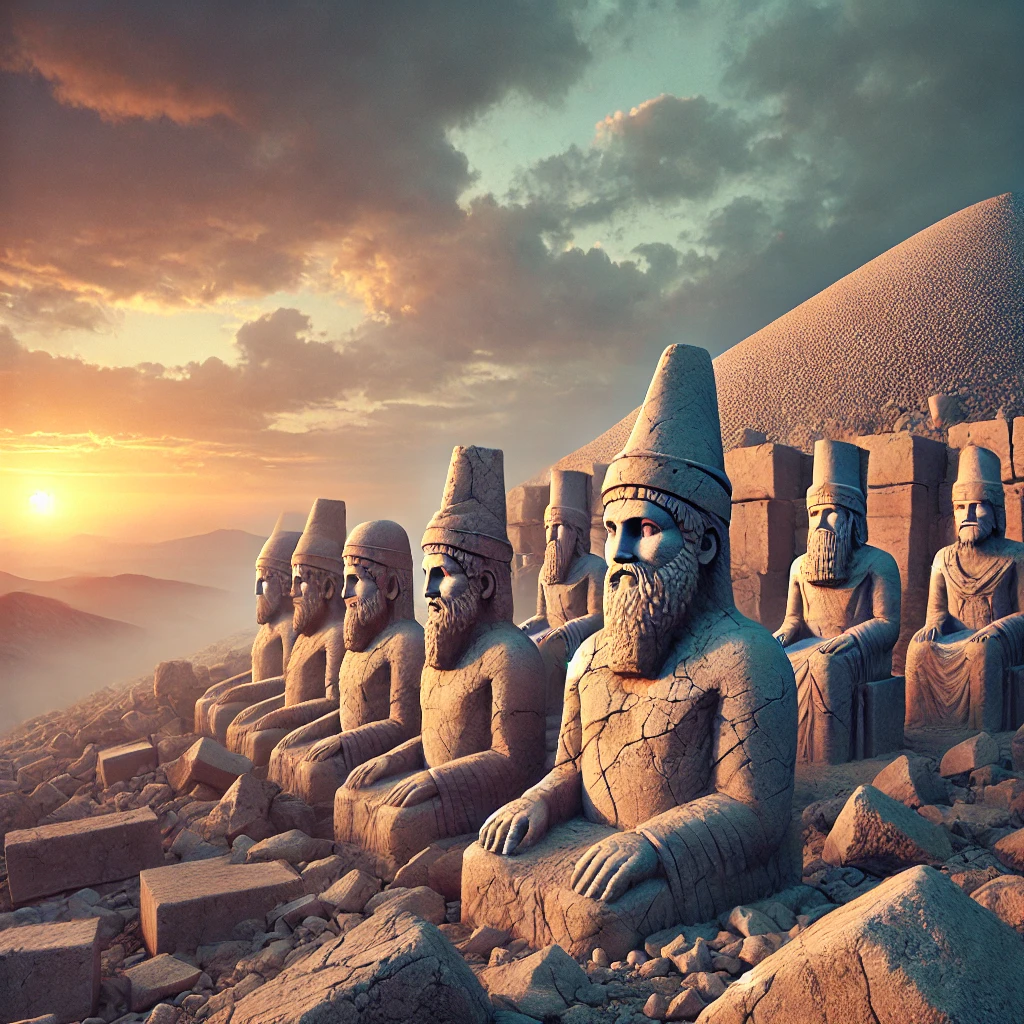Mount Nemrut: UFOs and Ancient Secrets

Yalçın Yalman emphasized his unwavering commitment to proving his encounters with extraterrestrial phenomena. One of the most compelling aspects of Yalman’s testimony is his significant vision regarding Mount Nemrut. According to Yalman, he received messages from the beings he encountered, informing him that an ancient spacecraft is hidden beneath this historical site. Mount Nemrut, known for its monumental statues and ancient tombs, particularly intrigued Yalman because of its archaeological significance and mysterious past. He believes that this site, already rich in historical artifacts from the Commagene Kingdom, holds even more profound secrets in the form of extraterrestrial technology.
Additionally, Yalman spoke about a tomb that resembles those found in ancient graveyards. He asserted that this tomb contains significant extraterrestrial artifacts. His vision and the messages he received suggest a connection between ancient human civilizations and advanced extraterrestrial beings, a theory that challenges conventional historical understandings.
Yalçın Yalman is renowned for capturing one of the most significant UFO recordings known as the Turkey UFO incident. Between 2007 and 2009, Yalman documented numerous sightings of unusual, unidentified flying objects over Kumburgaz, Turkey. His recordings, which have been scrutinized and validated by various experts and Turkish scientific institutions, depict detailed images of UFOs, including clear footage of the crafts and their occupants. Yalman’s work has significantly contributed to the study of UFO phenomena and continues to be a focal point in discussions about extraterrestrial encounters.
Mount Nemrut, standing at 7,000 feet above sea level, is a limestone outcropping that overlooks much of the surrounding area and is one of the tallest peaks in the Taurus mountain range in southern Turkey. This range was created by the collision of the African and Eurasian tectonic plates, spans 350 miles, and is composed of ancient limestone deposited millions of years ago. The Taurus mountains also house some of the largest cave systems on Earth, and the tectonic boundary here is responsible for the earthquakes experienced in Turkey and Syria. The air at this altitude is notably thin, presenting a challenge to visitors, but the site is made even more remarkable by its archaeological significance, earning it a place as a UNESCO World Heritage Site.
Mount Nemrut’s limestone was deposited around 65 million years ago when this area was submerged beneath a shallow sea. Over millions of years, the sea dried up and the land was uplifted through tectonic activity. The earth beneath the mountain range is rich with minerals like iron, copper, and lead. Due to its strategic location near the Tigris and Euphrates rivers, the region has seen human habitation for thousands of years.
The mountain features a spectacular archaeological site commissioned by King Antiochus I in the first century BCE. This site blends Hellenistic, Persian, and Anatolian influences, and includes colossal statues of Antiochus, Greek and Persian gods, and animals like lions and eagles, symbolizing strength and protection. The statues, however, have all been decapitated, possibly due to ritualistic iconoclasm or as an act of desecration by later cultures.
There is a stone relief at Mount Nemrut depicting Antiochus I of Commagene shaking hands with Heracles. Heracles (known as Hercules in Roman mythology) was a Greek god and hero. He is one of the most famous figures in Greek mythology, renowned for his incredible strength, bravery, and numerous far-ranging adventures. Heracles was the son of Zeus, the king of the Greek gods, and Alcmene, a mortal woman. His exploits and heroic deeds made him a central figure in Greek mythology and a symbol of strength and resilience. Over time, Heracles became associated with the gods and was worshipped as a deity in various regions of the ancient Greek world.
Despite extensive archaeological efforts, the central burial chamber of the tomb remains unexplored due to continuous caving. The tumulus, a large burial mound on Mount Nemrut, consists of loose stones that tend to cave in, thwarting excavation attempts. This self-healing nature of the mound has prevented archaeologists from reaching the central burial chamber, which is believed to hold significant historical artifacts and possibly the remains of King Antiochus. According to Yalçın Yalman, he received messages from the beings he encountered, informing him that an ancient spacecraft is hidden beneath this historical site.

